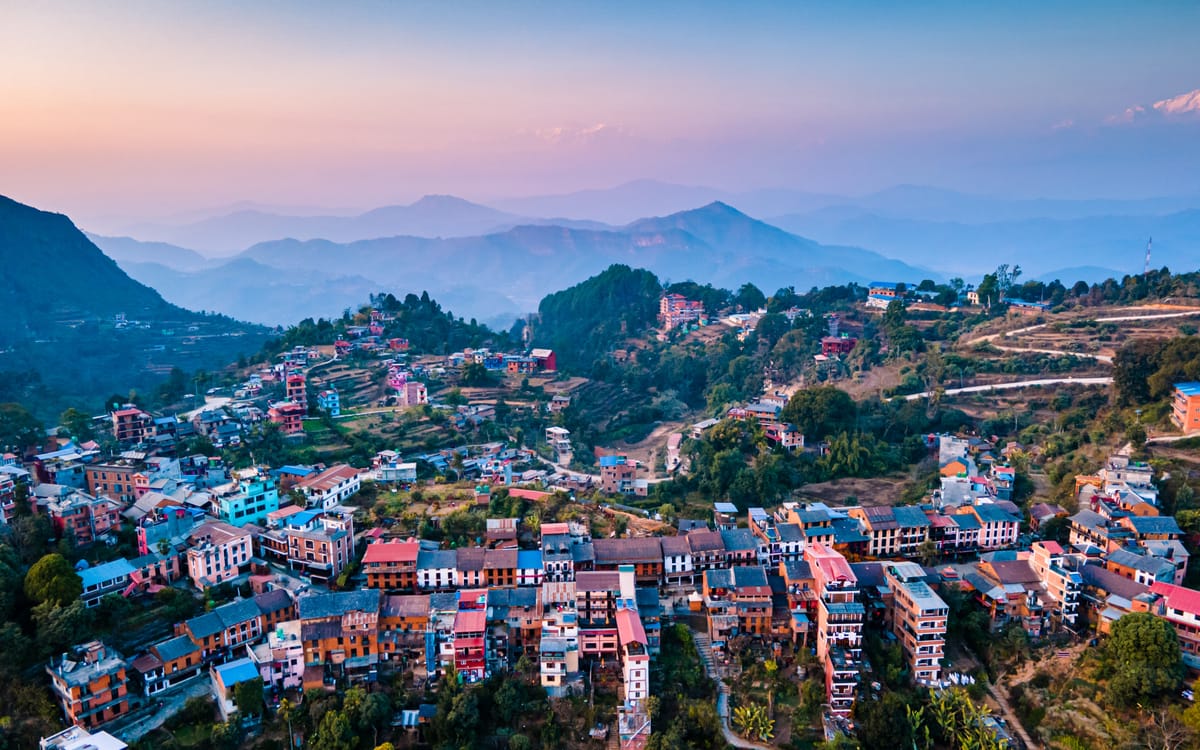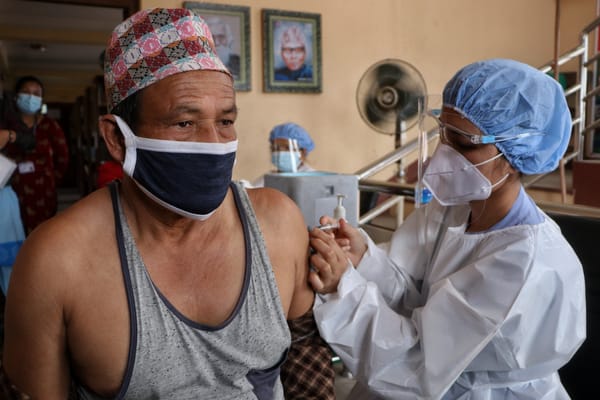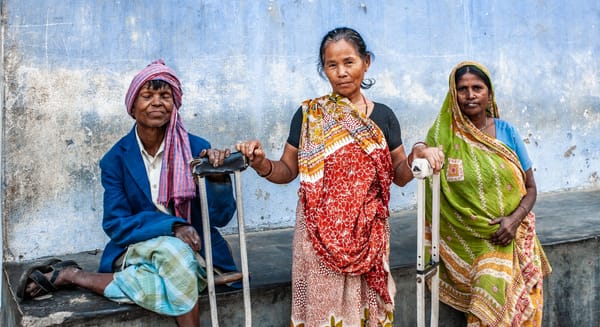Mountains Shouldn’t Be Barriers: Creating Access to Care in Rural Nepal

The Himalayas have long inspired awe, wonder, and reverence. Towering over Nepal like ancient sentinels, they define the country’s landscape, culture, and national identity. But for millions of people living within these majestic ranges, these mountains are more than just breathtaking scenery — they are physical, logistical, and life-threatening barriers to something far more essential than adventure or tourism: basic healthcare.
In Nepal’s remote villages, the distance between survival and tragedy is often measured not in miles, but in vertical meters. Where roads end, trails climb. Where hospitals stand in urban centers, villages cling to mountainsides. And where medical professionals gather in the cities, entire communities remain stranded — medically isolated and systematically underserved.
Mountains shouldn’t be barriers to care.
But for decades, they have been.
At Malla Medical, we exist to ensure they no longer are.
The Hidden Crisis Behind Nepal’s Beauty
Nepal’s global image is often romanticized — a spiritual land of towering peaks, ancient temples, and peaceful monasteries. But beneath that postcard image lies a far harsher reality for the people who live beyond the paved roads.
Roughly 80% of Nepal’s population resides in rural areas, many of them in the hill and mountain districts. In these regions, geographic isolation has created a health crisis that remains largely invisible to the outside world. Clinics, if they exist, are often understaffed, under-equipped, and out of reach for large segments of the population.
Villagers frequently trek for hours — or days — just to reach the nearest health post. Pregnant women are carried in makeshift stretchers. In emergencies, many rely on sheer luck, prayer, or untrained traditional healers. Ambulances, helicopters, and specialty care are available only to the wealthy or the fortunate few who live closer to urban centers like Kathmandu or Pokhara.
What makes this crisis even more tragic is that many of the conditions leading to death or lifelong disability are easily preventable with timely, basic medical intervention. Infections, childbirth complications, untreated injuries, hypertension, malnutrition, and chronic diseases like diabetes all contribute to a silent epidemic of unnecessary suffering.
The Cost of Inaccessibility
The consequences of this isolation are not theoretical — they are lived experiences with irreversible outcomes:
- Maternal Mortality: Nepal continues to report one of the highest maternal mortality rates in South Asia, particularly in rural districts.
- Child Mortality: Thousands of children die annually from preventable illnesses such as pneumonia, diarrhea, and malnutrition.
- Chronic Diseases: Conditions like hypertension and diabetes often go undiagnosed for years, leading to strokes, kidney failure, and amputations.
- Injuries and Trauma: In regions where physical labor is the norm, even minor injuries can spiral into life-altering complications when medical care is delayed or unavailable.
But behind every statistic is a personal tragedy — a lost mother, a disabled father, a grieving family. These are not inevitable outcomes of living in the mountains; they are the result of a system that has failed to adapt to its geography.
The Structural Problem
Nepal’s healthcare system remains highly centralized, concentrated in urban hubs, and largely ill-equipped to serve its dispersed rural population. Political and economic priorities consistently favor urban infrastructure. Meanwhile, rural clinics struggle with:
- Severe shortages of trained medical professionals
- Inconsistent or expired medical supplies
- Lack of diagnostic equipment
- Intermittent power and internet connectivity
- Poor referral and evacuation systems
Even well-meaning global aid efforts often fail to make lasting impacts, as many interventions are short-term, donor-driven, and fail to build sustainable, community-owned solutions.
Rethinking the Model: Healthcare Without Borders
At Malla Medical, we believe that the very notion of healthcare must be reimagined for regions like rural Nepal. Conventional urban-centric healthcare models will never succeed in serving scattered mountain populations.
We must build decentralized, mobile, and adaptive systems — systems that bring care to the people rather than expecting people to reach care.
Mountains should not be obstacles to care — they should be integrated into its design.
Our Approach at Malla Medical
1. Listening Before Acting
Our work begins with immersion. We conduct extensive field research, walking village trails, interviewing community leaders, healthcare workers, and families directly affected by the healthcare gap. We gather not only clinical data but cultural, logistical, and social insights that inform every solution we design.
2. Mobile Health Units
In regions where permanent healthcare facilities are impractical, we deploy mobile health units — equipped with diagnostic tools, essential medications, and emergency supplies. These units rotate through remote villages on scheduled circuits, delivering consistent care directly to those who need it most.
3. Training Community Health Workers
We identify and train local individuals — often women — to become frontline healthcare providers. These Community Health Workers (CHWs) deliver basic care, recognize danger signs, and facilitate early interventions, serving as critical lifelines for their communities.
4. Telemedicine Solutions
Where possible, we implement telemedicine hubs powered by solar energy and satellite connectivity. These platforms enable real-time consultations between rural patients and urban specialists, dramatically expanding access to diagnostic expertise without forcing patients to leave their villages.
5. Culturally Integrated Health Education
Healthcare is most effective when it respects and integrates local culture. We develop education programs in local languages and dialects, addressing maternal health, nutrition, hygiene, chronic disease prevention, and mental health in culturally appropriate ways.
6. Data-Driven Systems Reform
We systematically map healthcare gaps across Nepal’s rural regions, providing governments and international partners with actionable data to drive policy reforms, resource allocation, and long-term system redesign.
The Global Relevance
While Nepal’s geography is extreme, the pattern of healthcare inequity it faces is tragically universal. Rural communities across the world — from Sub-Saharan Africa to indigenous North America — face similar systemic neglect when health systems are built for urban convenience rather than rural necessity.
What we are building in Nepal has the potential to become a global model for delivering care to any population that lives beyond the conventional reach of modern healthcare systems.
Mountains come in many forms — geography, poverty, politics. Our mission is to dismantle them all.
The Moral Imperative
Every year that passes without action, preventable deaths continue to mount. The technology to close these gaps already exists. The knowledge exists. The resources exist.
What has been missing is the will.
Malla Medical refuses to accept a world where your chance of survival depends on your proximity to a city. We reject the notion that living on a mountainside should condemn you to substandard care. Health is not a luxury afforded only to the geographically fortunate — it is a universal right.
The Road Ahead
We are only beginning. In the years ahead, Malla Medical aims to:
- Expand mobile coverage across all of Nepal’s high-need districts.
- Certify hundreds more community health workers.
- Establish partnerships with universities to train a new generation of rural healthcare leaders.
- Scale our models into other countries facing similar challenges.
But beyond expansion lies a deeper goal: to change the global conversation about healthcare delivery entirely.
No more excuses.
No more impossible distances.
No more silent suffering.
Conclusion: Mountains Shouldn’t Be Barriers
Mountains are meant to inspire, not isolate.
They should represent human endurance, not systemic failure.
The people who live in Nepal’s hills have endured for generations — but they should no longer have to endure the consequences of healthcare neglect.
At Malla Medical, we are committed to building a system that climbs these mountains with them — one where healthcare travels every trail, crosses every ridge, and reaches every life.
Because mountains should never be barriers to care.



